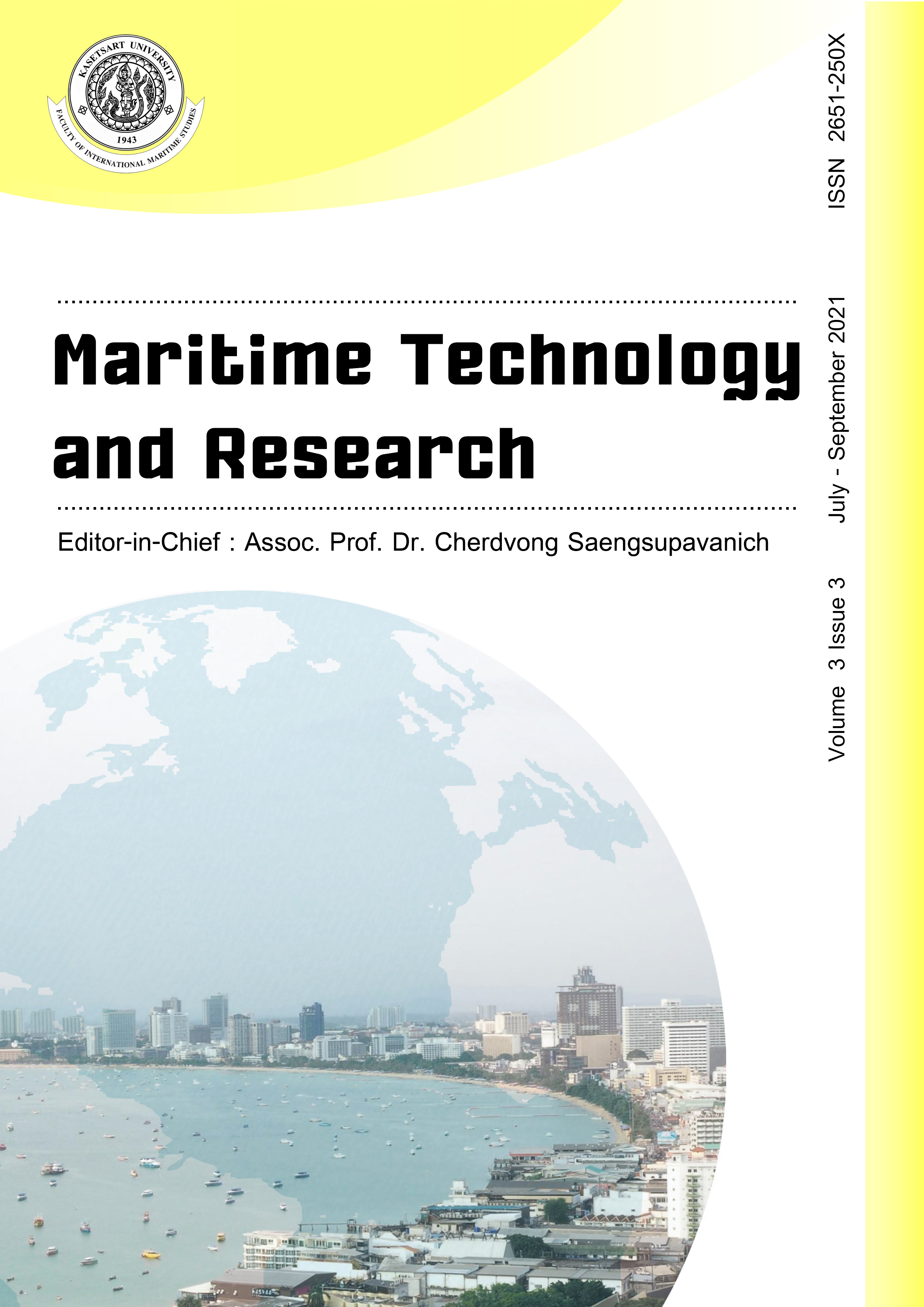Impact of the Central African Economic and Monetary Community’s merchant shipping instruments on Cameroon’s maritime legislation
DOI:
https://doi.org/10.33175/mtr.2021.243227Keywords:
Maritime legislation, Dual legal system, Regional instruments, International standards, Central African Economic, Monetary CommunityAbstract
The regulation of the shipping industry is deeply rooted in treaties or agreements- whether bilateral, multilateral, or of a global scope. Where such treaties emanate from a regional or sub-regional organization, however, it all depends on whether the organization in question is geared towards loose cooperation or formal integration. A loose cooperation-oriented organization such as the Gulf of Guinea Commission does not have treaty-making competence. On the other hand, a formal integration-oriented organization such as the Central African Economic and Monetary Community (known by its French acronym, CEMAC) usually develops instruments that tend to heavily impact the legislative framework of its member-states. The impact of the latter organization’s Merchant Shipping Code regime on Cameroon can be seen from what the country has achieved in terms of modernizing its maritime legislation and providing solutions to the challenges inherent in its dual legal system. The CEMAC Merchant Shipping Code (hereinafter referred to as the ‘Sub-regional Shipping Code’) must also be perceived as a component of Cameroon’s overall effort geared towards meeting international maritime legislative implementation and enforcement standards. However, the challenges confronting Cameroon at these various levels are huge, notably in light of the country’s inability at this point to fit into the recent International Instruments Implementation (III) Code scheme, which happens to be the single most important implementation and enforcement tool put in place to date by the International Maritime Organization. Questions thus arise as to the adequacy of the Sub-regional Shipping Code regime in addressing these challenges. This article is an appraisal of the said regime in its perceived role as a vehicle for developing Cameroon’s maritime legislation and addressing the related challenges inherent in the country’s dual legal system. The methodology adopted is doctrinal in approach and involves a content analysis of primary and secondary data. The article concludes that regional cooperation is a crucial complementary means by which to achieve good maritime governance and recommends that Cameroon should work towards achieving an enhanced Sub-regional Shipping Code regime, as well as an improved status of ratification in respect of international maritime instruments, complemented precisely by meaningful relations with cooperation-oriented bodies, especially the Abuja Memorandum of Understanding on Port State Control.
References
Anyangwe, C. (1987). The Cameroonian judicial system (pp. 81-82). Yaounde: CEPER.
Churchill, R. R., & Lowe, A. V. (1999). Law of the sea (pp. 77-81.). Manchester: Juris Publishing.
Ekwen, L. (2015). Protection of children’s rights in Cameroon. Munich: GRIN Verlag. Retrieved from https://www.grin.com/document/349811
Fombad, C. M. (2015). UPDATE: Researching Cameroonian law. Retrieved from http://www.nyulawglobal.org/globalex/Cameroon1.html
Gbetnkom, D. (1995). La dynamique de l’intégration économique régionale par le marché, L’exemple de l’UDEAC (p. 11). Thèse de 3e cycle, Université de Yaoundé.
IMO. (2021). Status of IMO treaties (p. 425).
Jacobs, F. G., & Roberts, S. (1987). The effect of treaties in domestic law (p. xxiv). London: Sweet & Maxwell.
Kagisye, E. (2017). Environnement juridique et institutionnel des affaires en Afrique: Cas de la Communauté économique et monétaire de l’Afrique centrale (CEMAC). hal-01496562f.
Le, V. T. (1971). The Cameroon federal republic (p. 32). Ithaca London: Cornell University Press.
League of Nations. (1922). Annexes 374f and 374g to the minutes of the nineteenth sessions of the council of the league of nations (pp. 872-877). Appendices of the League of Nations Official.
Matons, J. G. D. (2014). A review of international legal instruments: Facilitation of transport and trade in Africa (pp. 7-219). Washington, DC: World Bank Group.
Mukherjee, P. K. (2002). Maritime legislation (pp. 1-133). Malmô: WMU Publications.
Ndze, B. E. (2019). Sub-regional instruments as vehicle for developing Cameroon’s merchant shipping legislation: An analytical perspective with focus on the CEMAC code (Doctoral thesis). University of Dschang, Cameroon.
Ngwafor, E. N. (1995). Cameroon - The law across the bridge: Twenty years (1972-1992) of confusion. Revue générale de Droit, 26(1), 69-77.
Okere, B. O. (1981). The technique of international maritime legislation. The International and Comparative Law Quarterly, 30(3), 513-536.
Roach, J. A. (2014). Today’s customary international law of the sea. Ocean Development and International Law, 45(3), 239-259. doi:10.1080/00908320.2014.929460
Rubin, N. (1971). Cameroon: An African federation (pp. 71-79). New York: Praeger Publishers.
Salami, I. (2011). Legal and institutional challenges of economic integration in Africa. European Law Journal, 17(5), 667-682. doi:10.1111/j.1468-0386.2011.00572.x
Shaw, N. M. (1998). International law (p. 100). 4th ed. Cambridge University Press: Longman.
Tetley, W. (2005). Jurisdiction clauses and forum non conveniens in the carriage of goods by sea (pp. 6-7). The Hague: Kluwer Law International.
Vanchiswar, P. S. (1996). The establishment and administration of maritime matters - With particular reference to developing countries (p. 7). Malmö: World Maritime University.
Downloads
Published
Issue
Section
License
Copyright: CC BY-NC-ND 4.0








